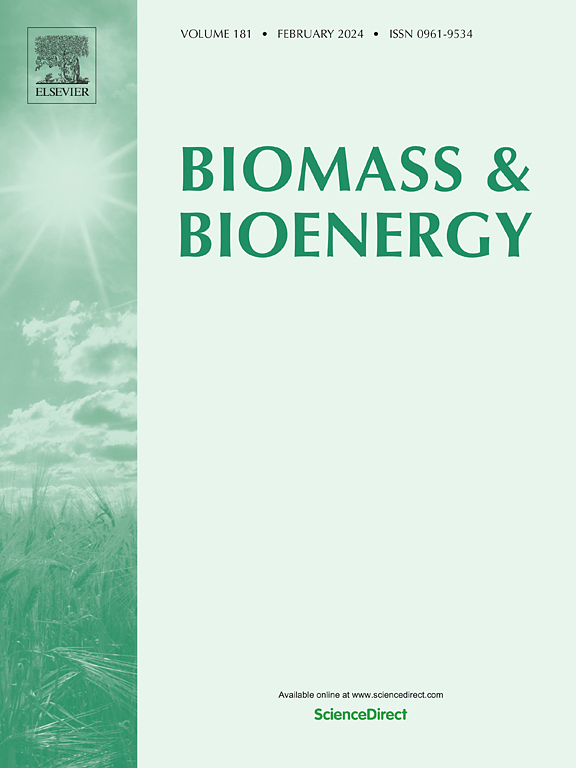从白毛杉精油提取的剩余生物质的增值:迈向可持续化妆品和制药应用的一步
IF 5.8
2区 生物学
Q1 AGRICULTURAL ENGINEERING
引用次数: 0
摘要
精油提取的剩余生物质是一种未被充分利用的资源,它可以通过回收有价值的生物活性化合物来促进循环生物经济。研究了水蒸馏法(WD)、蒸汽蒸馏法(SD)和微波辅助萃取法(MAE)三种提取方法对白毛杉(Ammodaucus leucotrichus)残留生物质组成和生物活性的影响。目的是评估不同的方法如何在循环生物经济框架内支持化妆品等可持续应用。高效液相色谱分析显示,MAE选择性提取高浓度Nobiletin (78.74 mg/g), WD保留新橙皮苷(99.91 mg/g)。通过DPPH、FRAP和ABTS测定,MAE的抗氧化活性最高(DPPH: 80.01%, FRAP: 87.36%, ABTS: 82.99%)。此外,MAE提取物对酪氨酸酶(85%)、胶原酶(85.71%)和透明质酸酶(74.93%)具有较高的抑制活性,显示出其在抗衰老化妆品领域的可持续应用潜力。这些研究结果强调了生物质价值在循环生物经济中的重要性,在循环生物经济中,废物转化为价值支持可持续发展和减缓气候变化。对人真皮成纤维细胞(HDFa)的细胞毒性测试显示,经mae处理的生物质毒性最小,同时活性氧(ROS)显著减少,胶原蛋白和透明质酸的产生增强。主成分分析(PCA)显示了每种提取方法不同的化学和生物学特征,MAE选择性地富集有利于皮肤年轻化的化合物。这些发现突出了剩余生物质在循环生物经济中的潜力,在循环生物经济中,废物转化为价值支持可持续发展和减缓气候变化。本文章由计算机程序翻译,如有差异,请以英文原文为准。
Valorization of residual biomass from essential oil extraction of Ammodaucus leucotrichus: A step towards sustainable cosmetic and pharmaceutical applications
Residual biomass from essential oil extraction is an underutilized resource that can contribute to the circular bioeconomy by recovering valuable bioactive compounds. This study investigates the impact of three extraction methods—Water Distillation (WD), Steam Distillation (SD), and Microwave-Assisted Extraction (MAE)—on the composition and bioactivity of residual biomass from Ammodaucus leucotrichus. The goal is to assess how different methods can support sustainable applications, such as cosmetics, within the circular bioeconomy framework. HPLC analysis revealed that MAE selectively extracted high concentrations of Nobiletin (78.74 mg/g), while WD preserved Neohesperidin (99.91 mg/g). Antioxidant activity, measured by DPPH, FRAP, and ABTS assays, was highest in MAE (DPPH: 80.01 %, FRAP: 87.36 %, ABTS: 82.99 %). Additionally, MAE extracts showed superior enzymatic inhibition, with high activity against tyrosinase (85 %), collagenase (85.71 %), and hyaluronidase (74.93 %), demonstrating their potential for sustainable, anti-aging cosmetic applications. These findings underline the importance of biomass valorization in the circular bioeconomy, where waste-to-value conversion supports sustainable development and climate change mitigation. Cytotoxicity tests on human dermal fibroblasts (HDFa) revealed minimal toxicity for MAE-treated biomass, coupled with significant reductions in reactive oxygen species (ROS) and enhanced collagen and hyaluronic acid production. Principal Component Analysis (PCA) illustrated distinct chemical and biological profiles for each extraction method, with MAE selectively enriching compounds beneficial for skin rejuvenation. These findings highlight the potential of residual biomass in the circular bioeconomy, where waste-to-value conversion supports sustainable development and climate change mitigation.
求助全文
通过发布文献求助,成功后即可免费获取论文全文。
去求助
来源期刊

Biomass & Bioenergy
工程技术-能源与燃料
CiteScore
11.50
自引率
3.30%
发文量
258
审稿时长
60 days
期刊介绍:
Biomass & Bioenergy is an international journal publishing original research papers and short communications, review articles and case studies on biological resources, chemical and biological processes, and biomass products for new renewable sources of energy and materials.
The scope of the journal extends to the environmental, management and economic aspects of biomass and bioenergy.
Key areas covered by the journal:
• Biomass: sources, energy crop production processes, genetic improvements, composition. Please note that research on these biomass subjects must be linked directly to bioenergy generation.
• Biological Residues: residues/rests from agricultural production, forestry and plantations (palm, sugar etc), processing industries, and municipal sources (MSW). Papers on the use of biomass residues through innovative processes/technological novelty and/or consideration of feedstock/system sustainability (or unsustainability) are welcomed. However waste treatment processes and pollution control or mitigation which are only tangentially related to bioenergy are not in the scope of the journal, as they are more suited to publications in the environmental arena. Papers that describe conventional waste streams (ie well described in existing literature) that do not empirically address ''new'' added value from the process are not suitable for submission to the journal.
• Bioenergy Processes: fermentations, thermochemical conversions, liquid and gaseous fuels, and petrochemical substitutes
• Bioenergy Utilization: direct combustion, gasification, electricity production, chemical processes, and by-product remediation
• Biomass and the Environment: carbon cycle, the net energy efficiency of bioenergy systems, assessment of sustainability, and biodiversity issues.
 求助内容:
求助内容: 应助结果提醒方式:
应助结果提醒方式:


